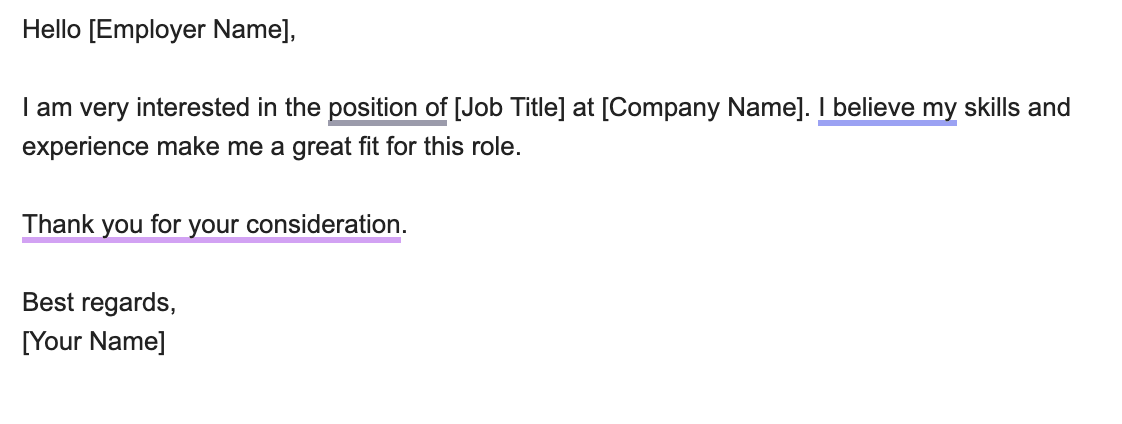 © Photo by cottonbro studio from Pexels 2020
© Photo by cottonbro studio from Pexels 2020
How to write a good CV and motivation letter
Ostatnia aktualizacja piątek, 07/03/2025
These days, making the next big step towards any job, internship, or even volunteer opportunity means condensing our experiences, skills and education into bullet points and paragraphs to make a good first impression. Over-analysing each and every word to tailor that perfect CV and motivation letter is something that we are all too familiar with. Competition is high and with so many people likely going after the same position as you, it’s imperative to stand out. So how can you ensure that your profile shines brighter than the rest?
- Take into account the job description and submission requests.
First and foremost, you want to be sure you’re following the guidelines for submission EXACTLY as requested. Before tackling the task of shaping your CV and writing out your motivation letter:
- Does the organisation request that you put both files into a single PDF?
- Is there a character limit or specific length requirement?
If the position requests that you send your application via email, do not leave the subject and body empty. It is best to include your name and the position you are applying for in the subject, and a short introductory message in the body. Especially if you’re going through that familiar yet tedious period of submitting 200 job apps in the same week, it can be easy to overlook that some positions are looking for you to adhere to specific guidelines.
- Tailor your documents to the position you are applying for
If you’re applying to be a policy analyst, the last thing to brag about would be your time as a veterinary assistant (no matter how fulfilling that experience may have been for you). Unless there are tasks from past experiences that overlap with the new one you would like to tackle, it is best not to include absolutely everything. Highlighting relevant skills allows the hiring manager to see that you’re capable of doing some of the things requested for the position.
And it may seem straightforward, but never forget to order your experiences on your CV from newest at the top to oldest at the bottom. This is especially made easy when creating your CV via Europass, as you can generate multiple CVs with the option to select what you would and would not like to include, without the hassle of rewriting and reformatting the entire document. Here you can keep a record of all of your experiences, education, languages, skills and more!
- Structuring your motivation letter
When writing a motivation letter, it is best to condense everything into 3 paragraphs as most positions typically have a 1-page length requirement. The first paragraph should be an introduction about you. Basic information such as who you are, your educational background, and motivation followed by your most recent/current position (and if you are a student, it is very helpful to include where and what you study, and when you have or will be graduating). Conclude this paragraph with your motivation to apply for the position, why are you interested in taking on this particular position and why this organisation?
The second paragraph should highlight your relevant past experiences, what have you already done related to the position? Talk about this experience in depth and feel free to express any positive sentiments associated with the experience to demonstrate your enthusiasm. The final paragraph should summarise why you believe you are a good candidate, what you bring to the table and conclude with a closing sentence such as: “I look forward to meeting with you and discussing my qualifications in further detail” or “Thank you for the opportunity to apply for this position”.
- Avoid repeating your CV in your motivation letter, go in depth about “you”
Your motivation letter is a deeper look into your experiences and personality. Hiring personnel would have already had a look at your CV before reading the letter, they are well aware of what it is exactly that you have done and now it's your turn to explain your selected experiences in more detail. Think of expanding those bullet points into a few sentences. For example, if you are applying for a communications position and one of the points mentioned on your CV is “Supported and executed partnership requests and collaborations.”, talk about a specific example of this and how exactly you “supported” this partnership. Think of your motivation letter as a ‘vibe check’, revealing bits of your personality throughout while maintaining a professional tone.
- Do your research
The job description itself is a treasure trove of information. Now’s the time to familiarise yourself with the position and organisation itself. It can also be quite advantageous to include keywords from the job description in your letter, adapting your text to more closely align yourself with the position. Get up close and personal with their ‘About us’ section, read into their values and any notable achievements and don’t forget to mention them in your motivation letter when expressing why you are interested in the position. Who is your prospective employer and what can they offer you? Do they stand for things you believe in? Have a look at the current team if that information is available. If it matters to you, is it an international/diverse working environment? Keeping yourself informed not only demonstrates that you do your research but it is also an opportunity for you to envision what this prospective opportunity will look like for you if you were to start working.
- Proofread for spelling, grammar, or formatting mistakes

This tip is pretty straightforward, but maintaining professionalism in your CV and motivation letter is key as this is your first impression after all. Little mistakes such as these, if picked up by the hiring manager, might be interpreted as disinterest or lack of attention to detail. Especially if you are applying for a position where the primary language isn’t your mother tongue or one in which you are nearly fluent, spelling and grammar are good to triple-check. In terms of formatting, be sure the dates on your CV are in order and in the same format consistently (ex. 10 May 2000 or 10/05/2000).
- Avoid these mistakes when using AI
- Do not write your entire motivation letter or CV with the use of AI
Artificial intelligence makes it easy to write out entire motivation letters while saving you plenty of time. And while it is tempting to turn to it to write out hundreds of applications, always be mindful of quality over quantity and never copy/pasting directly. Curating a select few letters to be personalised and detailed will give you the chance to stand out even more than typing out 100 poorly prepared ones. It is ok to use AI for assistance and inspiration while keeping in mind that with the prevalence of these technologies, organisations are aware of what AI looks and sounds like. It is always best to turn any generated texts into your own words, otherwise it may have adverse effects on your potential to be selected.

b. The placeholders ([Employer Name], [Job Title], [Company Name], [Your Name]) were not filled in by the AI, making the application look generic, unprofessional and impersonal.
Using AI to generate templates is another option for inspiration. Although potentially one of the worst mistakes you can make is forgetting to remove any placeholder texts. Leaving these bits of text anywhere in your application may make it seem as though you did not take the time to proofread. Rushing through the application process may also show a lack of dedication, which of course doesn’t look good right at the start before you are even selected for the position. Always take the time to proofread and include all the relevant details.
- Don’t be discouraged and keep applying!
Rejection is part of the process, sometimes you will experience a bit of discouragement especially if you’ve been receiving those dreaded emails that go something like “Thank you for your interest in (position) at (company name). We regret to inform you…” (apologies for any Posttraumatic Stress Disorder we may have triggered with that quote). Remember that every rejection is a redirection. You can also broaden your horizons and search for opportunities using EURES, a European employment service that provides tips and information for both job seekers and employers as well as a portal allowing you to search for jobs across 31 European countries. Just keep sending in those applications, it’s better to try and try again than to not try at all.
Written by Eurodesk Brussels Link